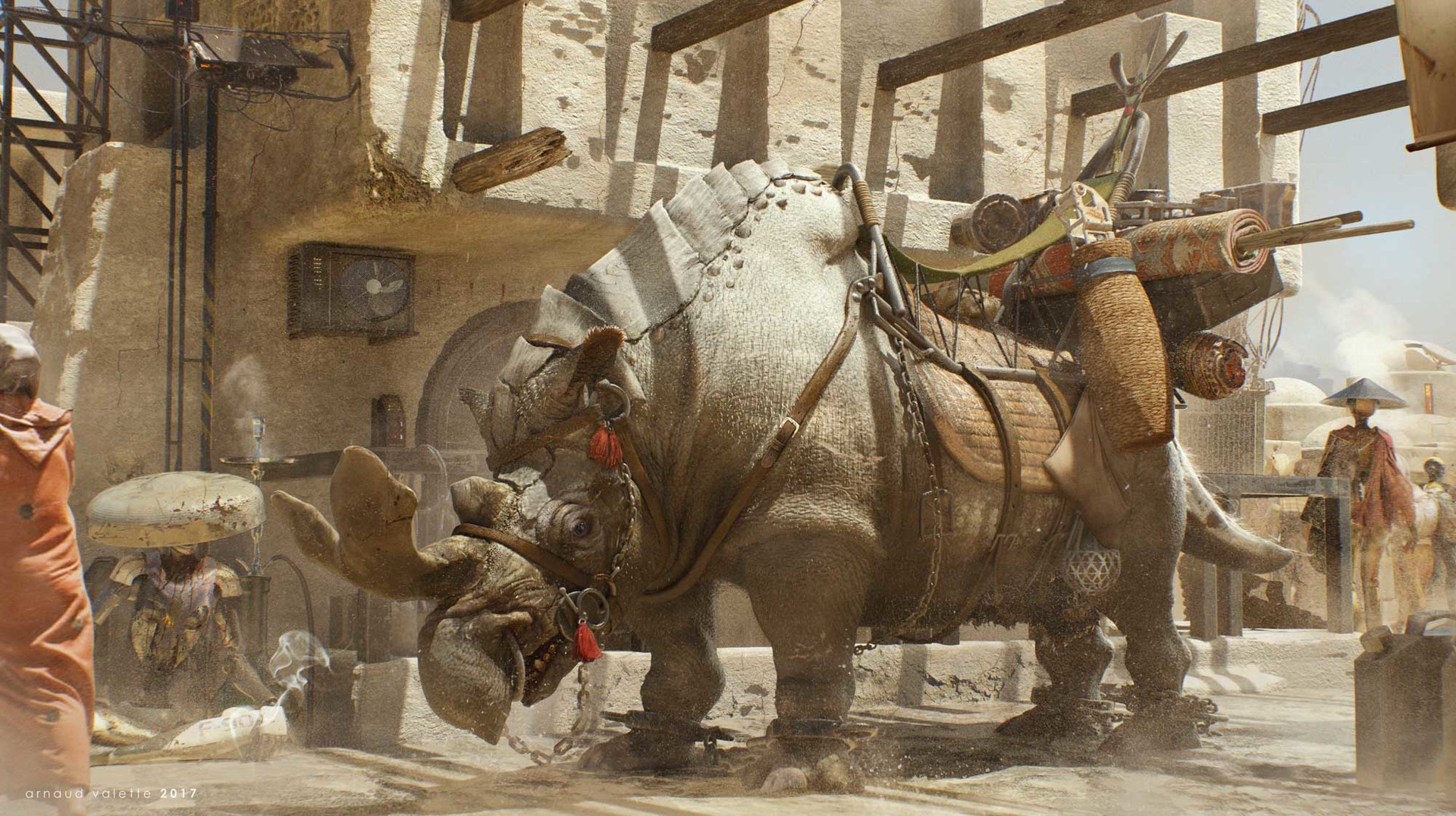R A ' K A T H A

B V U O T

- Intent: To further flesh out Ra'Katha.
- Image Credit: x
- Canon: N/A
- Permissions: N/A
- Links: N/A
- Name: Bvuot
- Designation: Non-sentient
- Origins: Ra'Katha
- Average Lifespan: 35 to 60 standard years.
- Estimated Population: Planetary
- Description: The Bvuot is one of the most common creatures on Ra'Katha, used as a beast of burden and for the many different products it gives. Large, bulky, and with a tough hide, it is one of the toughest creatures on Ra'Katha, evolved to be able to withstand the hostility of Ra'Katha's desert environment as well as the many predators that live on the planet. The Bvuot is also one of the most extensively-domesticated creatures in both Ra'Kathan cultures, although it can be found in wild herds as well. The Bvuot have adapted to desert life with specialized internal glands that can hold large amounts of liquid, as well as an extremely slow metabolism. These glands are considered a Ra'Kathan delicacy.
One primary use of the Bvuot is their meat, which is a nutritional staple for both the Wan'anteen and Dejoka'ar. Being extremely large, the animal can give a significant amount of meat, enough to feed an entire tribe of Wan'anteen in a single day. Certain cuts of meat are considered higher-value, such as Bvuot steaks, while lesser-quality cuts are usually sold in marketplaces. Many different Ra'Kathan foods are derived from Bvuot meat, and it is often cooked with a great deal of Ra'Kathan spices. In addition, Bvuot milk (produced by Bvuot cows) is extremely nutritional and is a common Ra'Kathan drink.
The hide of the Bvuot is also used as a protective leather, given that it is extremely tough and resistant to damage. Bvuot leather is not considered exactly fine quality and is not worn in jewelry or in upper-class fashion, but on the other hand is very protective and used by both the Wan'anteen and Dejoka'ar in armor and protective wear. However, the material of the crest of the Bvuot is considered more valuable and is used in decoration and jewelry. The Bvuot is also used as a beast of burden, used to carry carts or transport heavy goods, although again it is not considered to be a 'noble' mount.
- Breathes: Type 1 Atmosphere
- Average Height of Adults: 3.2 meters
- Average Length of Adults: 5.94 meters
- Skin color: Grey-Brown
- Hair color: N/A
- Distinctions: Male Bvuots are slightly larger and have a pronounced crest on their muzzle. Females most notably have teats on their underbelly and do not have such a pronounced crest.
- Races: N/A
- Force Sensitivity: Non-Sensitive
- Beast of Burden: Extremely large and powerful, the Bvuot is a useful beast of burden for carrying or pulling heavy loads.
- Bountiful Creature: The hide, crest, and meat of the Bvuot are all used extensively in both Wan'anteen and Dejoka'ar cultures.
- Slow: Large, lumbering beasts, the Bvuot is a poor mount for those who wish to travel fast.
- Non-Sentient: The Bvuot is non-sentient and is thus not intelligent.
- Diet: Herbivore
- Communication: Bvuots communicate through vocal sounds, but there is no structural language utilized by the creature.
- Technology level: N/A
- Religion/Beliefs: N/A
- General behavior: Bvuots naturally live in herds similar to most galactic species of cattle, where females will raise their calves while males protect the herd and compete for mates.
It is unknown if it was truly the first creature of Ra'Katha to be domesticated by humans, but it was at least one of the first. Traditionally, Wan'anteen tribes would act as the aloof caretakers of a single herd, traveling nomadically with the herd as it harvested them for meat and other animal products but also protecting them from packs of predators. Many Wan'anteen tribes were structured around this semi-domestication, although some would truly domesticate smaller herds and use them as beasts of burden as well as for their animal products.
When the Dejoka'ar arrived, they began to domesticate the Bvuot on a much larger scale, and it became a staple of their culture and early economy. The Bvuot was critical for travel through the harsh desert, able to withstand the heat and go for long periods without water. Its hide is used for armor and protective wear while its crest is used for jewelry and upper-class ornamentation. Its meat is the most common in both cultures, and can be prepared in multiple ways, and is used in a wide variety of dishes.
Last edited:







